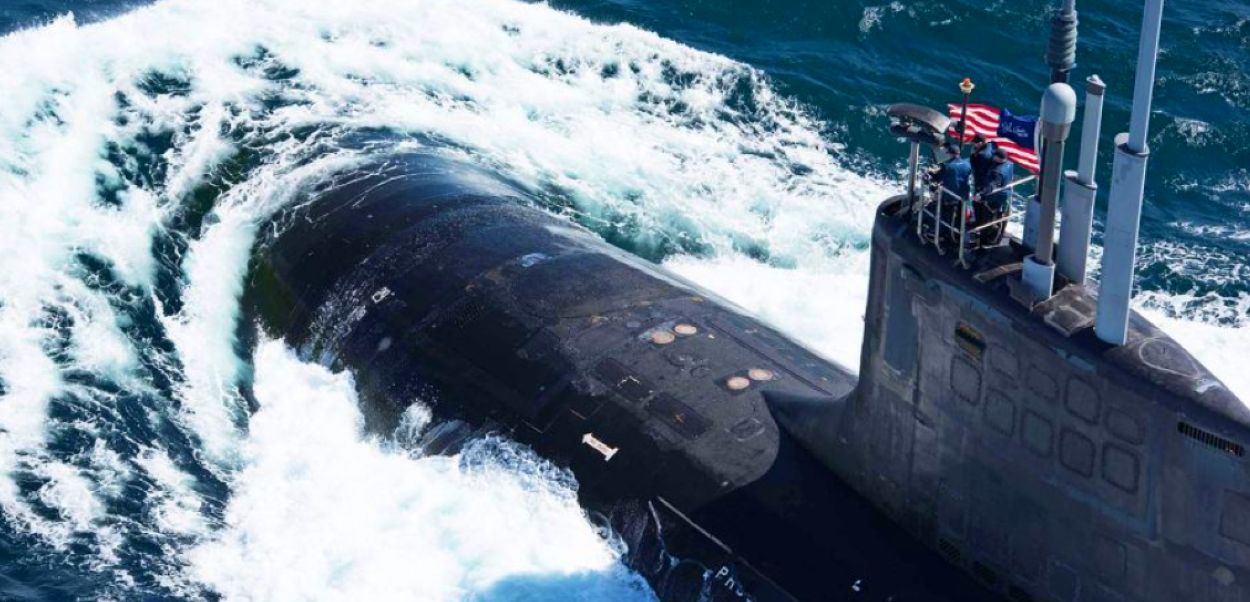To bolster its presence in the Western Pacific, the US Navy will soon enhance its submarine squadron in Guam by homeporting the cutting-edge Virginia-class USS Minnesota.
This nuclear-powered fast-attack submarine, which is conventionally armed with cruise missiles, will transition from its current home port in Hawaii to Guam at the start of the new fiscal year on October 1.
Lt. Cmdr. Rick Moore, a spokesperson for the US Pacific Fleet Submarine Force, confirmed this major deployment to Star and Stripes.
The USS Minnesota will be the first of its class to be permanently stationed in Guam, bringing next-generation attack capabilities to the region. This move reflects the Navy’s ongoing strategy to position its most capable platforms to ensure “peace and stability in the Indo-Pacific.”
“We are committed to posturing our most capable platforms to preserve peace and stability in the Indo-Pacific region,” Moore said. “Although I am unable to discuss specifics at this time, the Navy routinely assesses its overseas force positioning to include forward-deployed naval force submarines homeported in Guam.”
The announcement of Minnesota’s repositioning was first hinted at through photographs published by the US Navy last month.
The images depicted the submarine commencing sea trials in June following maintenance at Pearl Harbor. The introduction of the Virginia-class submarines marks the gradual replacement of the Navy’s aging Cold War-era Los Angeles-class fleet.
Throughout most of 2022, Guam served as the homeport for five Los Angeles-class submarines: the USS Annapolis, USS Jefferson City, USS Asheville, USS Springfield, and USS Key West.
However, in early 2023, the USS Key West returned to the US mainland after 35 years of service and is now awaiting decommissioning.
The Virginia-class submarines are designed for a wide range of missions, with a particular emphasis on littoral operations. These versatile submarines can undertake anti-submarine warfare, anti-surface ship warfare, strike warfare, surveillance, and reconnaissance.
According to a Navy fact sheet, the Virginia-class submarines are also capable of reconfiguring their torpedo rooms to accommodate special operations forces and their equipment for extended missions.
The USS Minnesota is equipped with Mark 48 torpedoes and can launch up to 12 Tomahawk land-attack cruise missiles from its vertical launching system. This advanced arsenal significantly enhances the Navy’s operational flexibility and firepower in the region.

Virginia-Class Nuke Attack Subs To Deter China
As China continues to expand its naval capabilities and ambitions in the Indo-Pacific region, Guam is becoming increasingly pivotal to the Pentagon’s strategy. This US territory hosts Andersen Air Force Base, Naval Base Guam, and Camp Blaz, a major Marine Corps base currently under construction.
Given its strategic position, Guam is expected to play a critical role in any potential conflict with China due to its status as the westernmost American territory and its proximity to the South China Sea—a key flashpoint in regional tensions.
The island is strategically located within the so-called second island chain, which stretches from Japan in the north to New Guinea in the south.
This chain, along with the first island chain connecting US-allied Japan, Taiwan, and the Philippines, forms a defensive framework reminiscent of Cold War strategies designed to limit communist China’s naval and air operations in times of conflict.
Therefore, the island serves as an optimal staging ground for projecting American naval power, despite being within reach of Chinese intermediate-range ballistic missiles.

The US Navy’s Virginia-class attack submarines, capable of stealthily operating beneath the waves, are a crucial asset in this strategic calculus. These submarines only reveal their presence when returning to port or when deploying their arsenal of cruise missiles and torpedoes.
A 2022 simulation conducted by the Center for Strategic and International Studies highlighted the critical role of these submarines in a potential conflict.
The simulation, which modeled a hypothetical Chinese amphibious invasion of Taiwan, demonstrated that US submarines, including both Virginia-class and older Los Angeles-class subs, “were able to wreak havoc with the Chinese fleet.”
In the event of a Chinese invasion of Taiwan, Virginia-class submarines could be crucial in countering Chinese ballistic missiles aimed at U.S. airbases like those in Guam, as well as other surface ships targeted by advanced weaponry such as “carrier-killer” ballistic and hypersonic missiles.
Although China is enhancing its anti-submarine warfare capabilities, the Virginia-class submarines are likely to remain among the most survivable US platforms in such a scenario.
- Contact the author at ashishmichel(at)gmail.com
- Follow EurAsian Times on Google News




